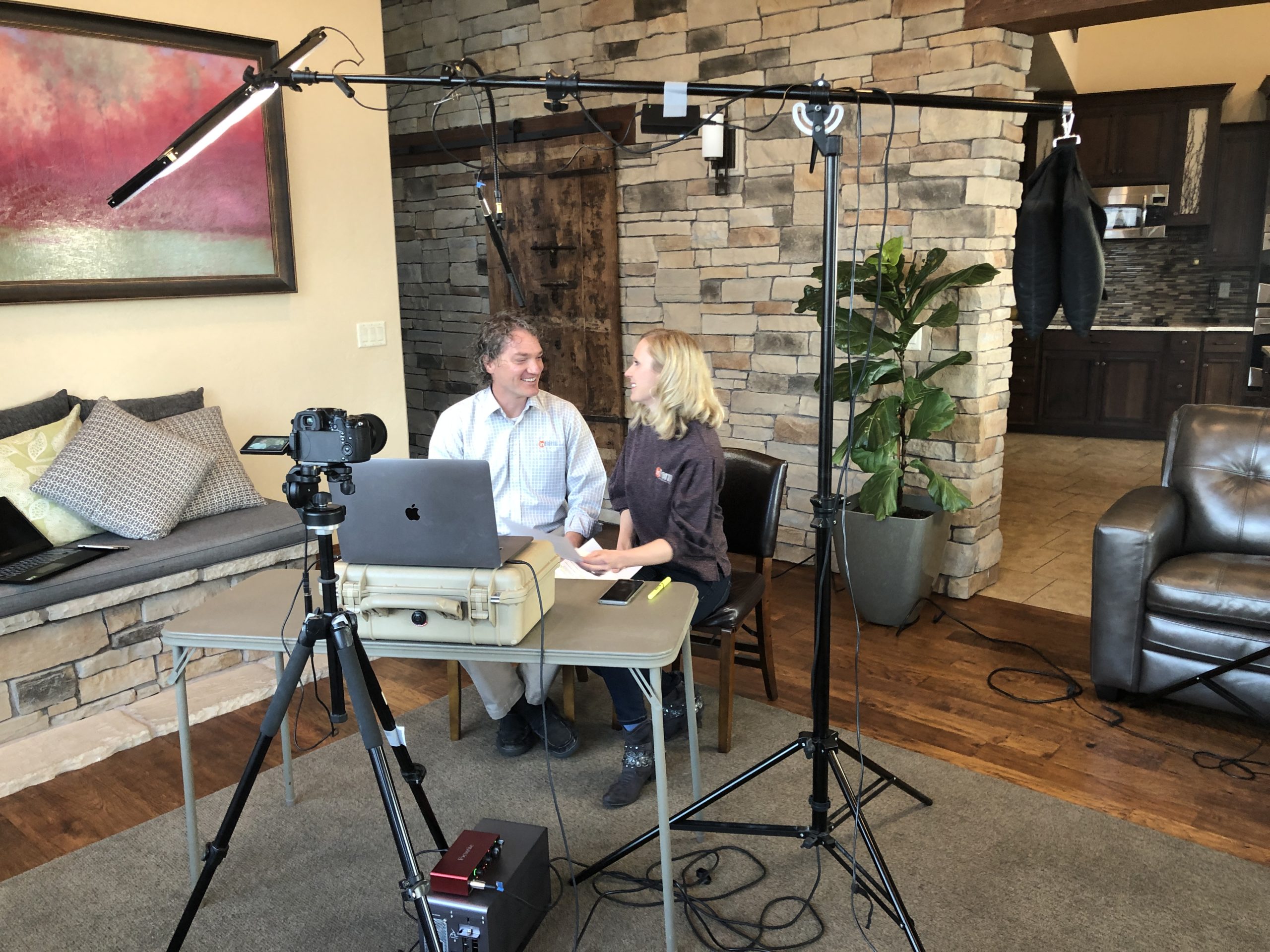Remember those days before you even knew what Zoom was? (And when you would just stick your fingers into a public bowling ball, no questions asked, and then turn around and eat pizza? …yeah, never again.) The COVID-19 pandemic has transformed life as we know it and forced us to shift our social and professional lives on-screen. By now, most of us are all too familiar with grainy, low-quality visuals and poor audio connections during meetings. But it doesn’t have to be this way!
Just as a high-quality business card can help make a strong first impression, high-quality video and sound quality will set you apart from competitors and make you stand out from the get-go.
That’s where we step in! We recently helped inForm Architecture create a top-notch professional video call by providing lighting, a professional camera, and a high-quality microphone. In contrast to so many others, they came across clearly and professionally, and it made all the difference.

Are you ready to up your Zoom game and see better results? Let’s talk through the five biggest mistakes people make on Zoom, and what you can do to fix them.
Ditch the “Up the Nose” Shots
Many people jump on video conference calls using their laptop computer. Because the camera is attached and the laptop sits on a standard desk, the camera angles upwards. We call this the "up the nose" shot – and we’re guessing you’re familiar with it enough to recognize that the angle is far from flattering! By widening what’s lower in the shot (your chin) and narrowing what’s higher in the shot (your hairline), the camera distorts your face and disrupts the strong, confident impression you’re trying to make.
Raising your conference camera to eye level or slightly above – the “birds-eye-view” – will offer a much better angle. It will correctly represent your face and body, which will both boost your confidence and help the other members get the strong impression that you desire.
Respect Virtual Personal Space
Another common mistake is not paying close enough attention to how you frame your face in the shot. Many participants are so close to the screen that their face fills the entire frame. But how would you make a person feel if you stood so close to them in real life that all they could really see was your face? Probably not all that comfortable!
The same is true for being too far away from your camera. Take time to adjust the camera distance from your face, with the goal of framing your face and upper body from an appropriate distance.
Clean Up Your Background
We’ve probably all seen viral clips or news stories about disasters that happened when people didn’t pay enough attention to their background on Zoom. Hopefully at this stage you don’t have old piles of laundry or stacks of papers visible behind you. But even things you might not have considered – like collections of books, paintings, nick-nacks, and even a collection of awards – can be distracting.
Before your next Zoom call, take a look at your background and try to consider what kind of impression you may be giving to others on the call. Then, simplify. It’s always best to have a clean background with subtle textures and minimal distractions.
Make Sure Your Voice Is Heard
This is perhaps the most important item we’ve covered so far. Even if you have a confident, professional appearance, poor audio quality will instantly undermine all your best efforts to make a good impression. (Not to mention how distracting and frustrating it can be to pause a conversation while someone tries to sort out their audio!) If others can’t hear you, you’re in trouble. Don’t just rely on the internal microphone in your computer unless you’re absolutely sure that it’s high quality. Even certain earphones might not offer as clear of audio as you would expect. A simple shotgun mic can do wonders!
Light it Up!
Just as it’s important to ensure that your voice is clearly heard, lighting is critical to giving you a clear and confident appearance on virtual calls. But there’s a trick to that! Most cameras automatically collaborate the color temperature of your room. In other words, the camera assumes that white will be white in all settings. But the lighting and even the primary colors in your room can affect the overall color temperature of your room, meaning that the camera may not adjust to the proper white balance. If that has been the case for you, be sure to look at your camera settings and try to correctly set them to white.
Another issue you might be running into is the conflict between outside natural light from your windows and indoor artificial lighting on your calls. Often artificial lights have a warm orange glow to them, but natural outdoor light has a blue undertone. When the two meet one another, you might have an odd orange/blue battle take place between them, leading to different visual outcomes on your calls. A simple fix is to replace your bulbs with “Daylight” bulbs instead of “Soft” or “Warm” colored bulbs.
We hope these simple tips for improving your video and audio quality will help you to stand out on your next video conference!
